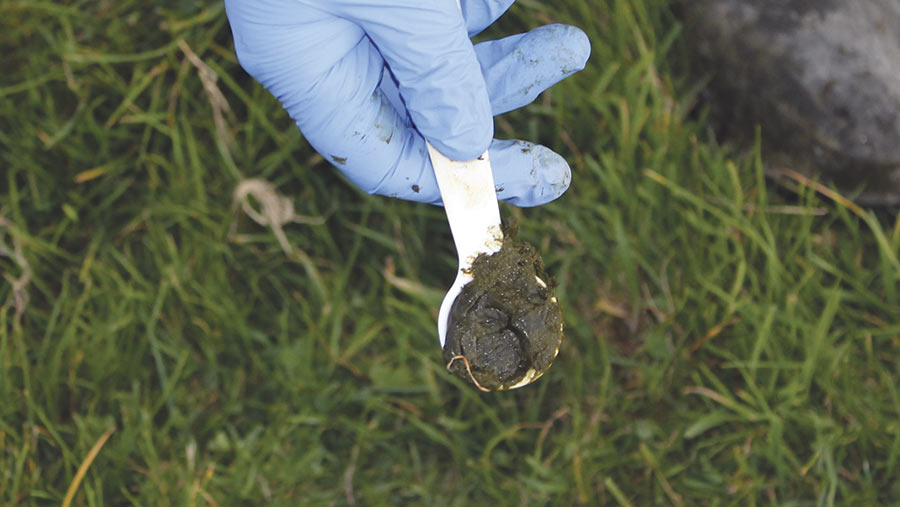Wormer trial shows faecal egg counting can cut drench costs

A research project has found using new technology and faecal egg counting can help halve drench use and save money and time.
The Techion Group/Sainsbury’s project, looking at remote location parasite diagnostics, was run with 44 farmers in the UK and 40 in New Zealand.
See also: How salivary testing could help breed more worm-resistant ewes
Techion Group were awarded a Sainsbury’s research and development grant to provide a group of Sainsbury’s farmer-suppliers with a reduced-price offer on the FECPAKG2 tool so they could use it to inform drenching decisions and management.
What is FECPAKG2?
FECPAKG2 is a tool for remote location parasite diagnostics and decision support. It enables simple faecal egg counts (FECs) to be taken on-farm without a microscope and provides FEC results quickly via email, so drenching decisions can be made in the field.
The three-year long study concluded in March 2017 and there were four main findings:
1. Worm burden timings
Worm burdens measured throughout the study were surprisingly high in autumn. Many farmers expect the spring/summer worm burden to be at its peak, but those using faecal egg counts (FEC) in lambs or hoggets in the autumn and winter months found surprisingly high worm burdens.
2. Reducing drench use
Most farmers reduced their chemical drench use throughout the study, by up to 50% for lambs and 80% for ewes.
“In the past I drenched based on a hunch after four to five weeks. Now drenching is based on facts,” said participating New Zealand farmer Warren Leslie, who has reduced his lamb drench use by half and extended intervals to eight to 10 weeks.
Two-thirds (67%) of the New Zealand farmers involved said they had changed their drench use and 27% of UK participants said they had saved time and money because of improved animal performance.
3. Using ineffective drenches
More than one-third of the New Zealand farmers participating in the study found they were regularly using a drench that was equal to or less than 95% effective.
The situation in the UK was worse, with 84% of case study farmers using ineffective drenches.
Average weight loss a lamb caused by ineffective drenching has been estimated at 3.13kg for this research, using the results of recent scientific studies. The average UK farmer from the sample involved in the study sold 1,818 lambs. Using an average deadweight price of £3.99/kg (AHDB, March 2017), this equates to £12.49 lost per lamb and £22,707 per farm.
4. Benefits of FEC
Of all the participating farms, 97% believe regular faecal egg counting can improve lamb growth rates. No farms saw a negative effect on performance from altering parasite control.
“It forms part of the informed decision making process we are trying to adopt here and helps keep ahead of the game. There’s no second guessing anymore,” said Leicestershire sheep farmer Gareth Owen.
“[It] has helped us significantly improve performance and farm output, while relying less on chemical intervention so its win win all round.”
You can find out more about FECPAKG2 at www.techiongroup.com
